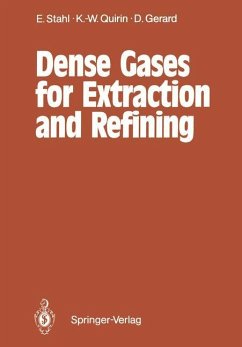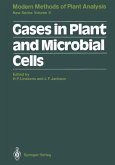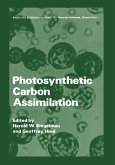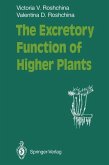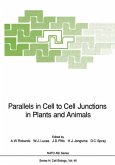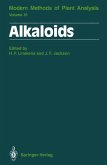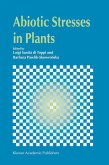Egon Stahl, Karl-Werner Quirin, Dieter Gerard
Dense Gases for Extraction and Refining
Übersetzung: Ashworth, Michael R.F.
Egon Stahl, Karl-Werner Quirin, Dieter Gerard
Dense Gases for Extraction and Refining
Übersetzung: Ashworth, Michael R.F.
- Broschiertes Buch
- Merkliste
- Auf die Merkliste
- Bewerten Bewerten
- Teilen
- Produkt teilen
- Produkterinnerung
- Produkterinnerung
Procedures for extracting or refining sensitive substances using dense gases have been developed for numerous purposes. Dense carbon dioxide is already being used industrially for decaffeination of coffee and extraction of hops. Further possible applications have been tested on the laboratory or pilot plant scales and shown to be mostly economical. Uses as varied as the non-aggressive extraction of spice, extraction of polymers, refining of spent oil, pyrolysis/extraction of wood and liquefaction of coal show the extremely wide range of application. The book comprehensively reviews the present…mehr
Andere Kunden interessierten sich auch für
![Gases in Plant and Microbial Cells Gases in Plant and Microbial Cells]() Gases in Plant and Microbial Cells75,99 €
Gases in Plant and Microbial Cells75,99 €![Photosynthetic Carbon Assimilation Photosynthetic Carbon Assimilation]() Photosynthetic Carbon Assimilation39,99 €
Photosynthetic Carbon Assimilation39,99 €![The Excretory Function of Higher Plants The Excretory Function of Higher Plants]() Victoria V. RoshchinaThe Excretory Function of Higher Plants75,99 €
Victoria V. RoshchinaThe Excretory Function of Higher Plants75,99 €![Abiotic Stresses in Plants Abiotic Stresses in Plants]() Abiotic Stresses in Plants112,99 €
Abiotic Stresses in Plants112,99 €![Parallels in Cell to Cell Junctions in Plants and Animals Parallels in Cell to Cell Junctions in Plants and Animals]() Parallels in Cell to Cell Junctions in Plants and Animals77,99 €
Parallels in Cell to Cell Junctions in Plants and Animals77,99 €![Alkaloids Alkaloids]() Alkaloids75,99 €
Alkaloids75,99 €![Abiotic Stresses in Plants Abiotic Stresses in Plants]() Sanità di ToppiAbiotic Stresses in Plants115,99 €
Sanità di ToppiAbiotic Stresses in Plants115,99 €-
-
-
Procedures for extracting or refining sensitive substances using dense gases have been developed for numerous purposes. Dense carbon dioxide is already being used industrially for decaffeination of coffee and extraction of hops. Further possible applications have been tested on the laboratory or pilot plant scales and shown to be mostly economical. Uses as varied as the non-aggressive extraction of spice, extraction of polymers, refining of spent oil, pyrolysis/extraction of wood and liquefaction of coal show the extremely wide range of application. The book comprehensively reviews the present state of development and features examples of application of this new technique.
Produktdetails
- Produktdetails
- Verlag: Springer, Berlin
- Softcover reprint of the original 1st ed. 1988
- Seitenzahl: 256
- Erscheinungstermin: 10. Januar 2012
- Englisch
- Abmessung: 244mm x 170mm x 15mm
- Gewicht: 447g
- ISBN-13: 9783642728945
- ISBN-10: 3642728944
- Artikelnr.: 36121949
- Herstellerkennzeichnung
- Springer-Verlag GmbH
- Tiergartenstr. 17
- 69121 Heidelberg
- ProductSafety@springernature.com
- Verlag: Springer, Berlin
- Softcover reprint of the original 1st ed. 1988
- Seitenzahl: 256
- Erscheinungstermin: 10. Januar 2012
- Englisch
- Abmessung: 244mm x 170mm x 15mm
- Gewicht: 447g
- ISBN-13: 9783642728945
- ISBN-10: 3642728944
- Artikelnr.: 36121949
- Herstellerkennzeichnung
- Springer-Verlag GmbH
- Tiergartenstr. 17
- 69121 Heidelberg
- ProductSafety@springernature.com
I. General Picture of Separation Procedures.- I.1 Principles of Substance Separation.- I.2 Conventional Methods of Extraction.- II. Basic Principles of Extraction with Dense Gases.- II.1 Historical Review.- II.2 Definition of Terms.- II.3 Special Features of Dense Gases.- II.4 Thermodynamic Fundamentals.- II.4.a Description of the Solvent Circulation.- II.4.b Considerations of Phase Equilibria.- II.4.c Calculations of Phase Equilibria.- III. Methods, Apparatus and Plants.- III.1 Procedures for Determining Phase Equilibria.- III.1.a The Synthetic Method.- III.1.b The Analytical Method.- III.1.c The Dynamic Method.- III.2 Extraction of Solids.- III.2.a Microextraction.- III.2.b High Pressure Soxhlet Extraction.- III.2.c Preparative Extraction.- III.3 Extraction Using Entrainers.- III.4 Continuous Extraction of Liquids.- III.4.a Fundamentals.- III.4.b Stepwise Separation.- III.4.c Counter-current Extraction.- III.4.d High Pressure Jet Extraction.- IV. Applications of Dense Gases to Extraction and Refining.- IV.1 General Survey.- IV.2 Fatty Oils and Waxes.- IV.2.a Solubility Behaviour.- IV.2.b Extraction of Oil Seeds.- IV.2.c Extraction of Waxes.- IV.2.d Influence on the Seed Proteins.- IV.2.e Fractionation of Fatty Oils and Waxes.- IV.2.f Removal of Oil from Crude Lecithin.- IV.3 Essential Oils and Flavours.- IV.3.a Solubility Behaviour.- IV.3.b Deterpenation.- IV.3.c Extraction of Pharmaceutically Active Components.- IV.3.d Extraction of Spices.- IV.3.e Extraction of Fragrances.- IV.3.f Prior Separation of Vegetable Waxes.- IV.4 Further Isoprenoids.- IV.4.a Extraction of Hops.- IV.4.b Steroids.- IV.4.c Carotinoids.- IV.5 Alkaloids.- IV.5.a Extraction of Alkaloids Used in Medicine.- IV.5.b Decaffeination of Coffee and Tea.- IV.5.c Extraction of Nicotine from Tobacco.- IV.6Oils of Law Volatility and Polymers.- IV.7 Extraction of Petroleum Products.- IV.7.a Deasphaltation of Heavy Oils.- IV.7.b Particle Separation from Viscous Oils.- IV.7.c Extraction of Oil-Containing Minerals and Residues.- IV.7.d Analytical Investigations.- IV.8 Extraction of Wood, Peat and Lignite.- IV.9 Extraction of Coal.- IV.10 Miscellaneous.- IV.10.a Extraction of Aqueous Solutions.- IV.10.b Adsorbents.- IV.10.c Decontamination of Drugs.- V. Non-Extractive Applications.- V.1 Pest Control.- V.2 Sterilisation.- V.3 Inflation, Disruption and Comminution.- V.4 High Pressure Micronising.- V.5 Fluid Chromatography.
I. General Picture of Separation Procedures.- I.1 Principles of Substance Separation.- I.2 Conventional Methods of Extraction.- II. Basic Principles of Extraction with Dense Gases.- II.1 Historical Review.- II.2 Definition of Terms.- II.3 Special Features of Dense Gases.- II.4 Thermodynamic Fundamentals.- II.4.a Description of the Solvent Circulation.- II.4.b Considerations of Phase Equilibria.- II.4.c Calculations of Phase Equilibria.- III. Methods, Apparatus and Plants.- III.1 Procedures for Determining Phase Equilibria.- III.1.a The Synthetic Method.- III.1.b The Analytical Method.- III.1.c The Dynamic Method.- III.2 Extraction of Solids.- III.2.a Microextraction.- III.2.b High Pressure Soxhlet Extraction.- III.2.c Preparative Extraction.- III.3 Extraction Using Entrainers.- III.4 Continuous Extraction of Liquids.- III.4.a Fundamentals.- III.4.b Stepwise Separation.- III.4.c Counter-current Extraction.- III.4.d High Pressure Jet Extraction.- IV. Applications of Dense Gases to Extraction and Refining.- IV.1 General Survey.- IV.2 Fatty Oils and Waxes.- IV.2.a Solubility Behaviour.- IV.2.b Extraction of Oil Seeds.- IV.2.c Extraction of Waxes.- IV.2.d Influence on the Seed Proteins.- IV.2.e Fractionation of Fatty Oils and Waxes.- IV.2.f Removal of Oil from Crude Lecithin.- IV.3 Essential Oils and Flavours.- IV.3.a Solubility Behaviour.- IV.3.b Deterpenation.- IV.3.c Extraction of Pharmaceutically Active Components.- IV.3.d Extraction of Spices.- IV.3.e Extraction of Fragrances.- IV.3.f Prior Separation of Vegetable Waxes.- IV.4 Further Isoprenoids.- IV.4.a Extraction of Hops.- IV.4.b Steroids.- IV.4.c Carotinoids.- IV.5 Alkaloids.- IV.5.a Extraction of Alkaloids Used in Medicine.- IV.5.b Decaffeination of Coffee and Tea.- IV.5.c Extraction of Nicotine from Tobacco.- IV.6Oils of Law Volatility and Polymers.- IV.7 Extraction of Petroleum Products.- IV.7.a Deasphaltation of Heavy Oils.- IV.7.b Particle Separation from Viscous Oils.- IV.7.c Extraction of Oil-Containing Minerals and Residues.- IV.7.d Analytical Investigations.- IV.8 Extraction of Wood, Peat and Lignite.- IV.9 Extraction of Coal.- IV.10 Miscellaneous.- IV.10.a Extraction of Aqueous Solutions.- IV.10.b Adsorbents.- IV.10.c Decontamination of Drugs.- V. Non-Extractive Applications.- V.1 Pest Control.- V.2 Sterilisation.- V.3 Inflation, Disruption and Comminution.- V.4 High Pressure Micronising.- V.5 Fluid Chromatography.

